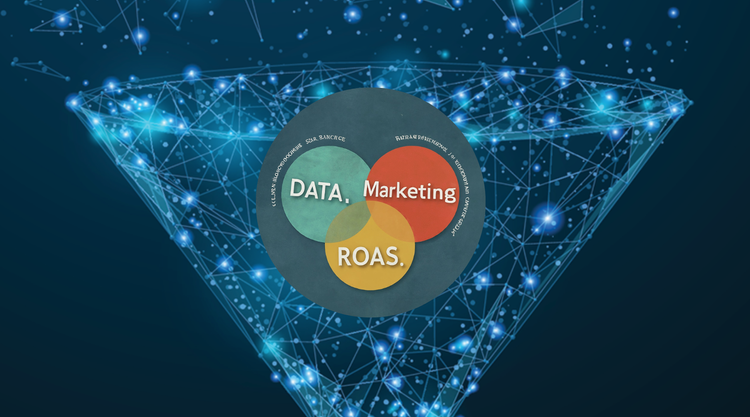Navigating the Digital Storm: Empowering Data-Driven Marketing with MLOps

As digital marketing evolves, machine learning (ML) provides a path to crafting personalized campaigns. However, these algorithms require understanding of their inherent complexities. This is where Machine Learning Operations (MLOps) comes into play. MLOps ensures your marketing strategies stay current, leveraging real-time data to drive your marketing endeavors forward.

But first, what is MLOps?
ML Ops is an ML engineering culture and practice that aims at unifying a set of standardized processes and capabilities for building, deploying, and operationalizing ML systems rapidly and reliably. MLOps blends machine learning, development, and operations (DevOps) to smooth the deployment and upkeep of ML models. It prioritizes scalability, consistency, and automation to guarantee an efficient ML application lifecycle.
Google Cloud's Vertex AI, a unified and fully managed machine learning platform, serves as an embodiment of this MLOps approach. It simplifies model development, deployment, and maintenance, while enabling smooth collaboration across different team members, from data scientists to ML engineers.
One of its key features is the automation of complex tasks through the use of AutoML and Vertex Pipelines, providing a unified interface for managing the entire ML lifecycle. Additionally, Vertex AI integrates seamlessly with other Google Cloud services, ensuring enhanced scalability, security, and ease of operation.

Leveraging Vertex AI MLOps to automate bidding in Google Ads
In the highly competitive digital marketing domain, the power to accurately predict customer lifetime value (LTV) can be transformative. The ability to determine future profitability associated with a particular customer optimizes bidding strategies within Google Ads, allowing marketers to spend wisely and maximize outcome efficiency.
The process flow begins with the collection of relevant transactional and behavioral data from web/app platforms. This data forms the basis for our predictive model, and leveraging the robust machine learning capabilities of Vertex AI, we transform this raw data into an intricate machine learning model. This model is specifically trained to accurately estimate each customer's LTV, thereby providing valuable insights for marketing campaigns.
Let’s do a compare and contrast of the end to end execution of this strategy
- Traditional LTV Method - In contrast to traditional marketing methods, where data analysis, LTV calculation, and their application to Google Ads are manual, labor-intensive and time-consuming tasks, the MLOps-oriented approach automates these processes. In the conventional setup, marketers would have to manually extract data from various sources, run LTV calculations, and then upload a customer list with LTV values into Google Ads. This methodology was not only resource-heavy but also posed the risk of utilizing outdated LTV data due to the absence of real-time updates.
- Modern LTV Method using MLops - The modern, MLOps-oriented approach, using Google Cloud's Vertex AI, resolves these issues. The LTV model is incorporated into an automated MLOps pipeline using Vertex Pipelines, eliminating the need for manual handling of the steps involved in model training. The pipeline comprises automated processes for data extraction, preprocessing, model training, validation, deployment, and continuous monitoring, ensuring real-time LTV updates and a consistent model training process with the most recent data.
A modernized data-driven marketing process using MLOps in Google Cloud
This MLOps pipeline works in synergy with Google Cloud's BigQuery, a multi-cloud data warehouse solution, allowing for efficient processing and analysis of large datasets. BigQuery data can be directly fed into the MLOps pipeline for model training, negating the need for manual data extraction and loading. Upon model training and validation, the model is deployed on Vertex AI, which then generates the predicted LTV values. These values can be uploaded directly into Google Ads, ensuring that your marketing campaigns target high-value customers, thus refining the bidding process and maximizing return on investment (ROI).
Moreover, the upload of customer lists with LTV values to Google Ads is automated using the Google Ads API within the MLOps pipeline. This eliminates the need for manual intervention once the LTV model generates predictions. A script is programmed to format the results and upload the customer list with LTV values to Google Ads, seamlessly replacing the manual process.
With the advent of MLOps, marketing strategies stay ahead of the curve, creative, efficient, and always up-to-date. It streamlines the process of LTV calculation and automates the task of uploading the customer list with LTV values into Google Ads. In essence, MLOps, especially leveraging Google Cloud's Vertex AI, offers a powerful, automated, and efficient solution for digital marketing. The integration of Vertex AI, Vertex Pipelines, and BigQuery under the Google Cloud ecosystem heralds a new era in digital marketing, revolutionizing the way marketing teams operate and succeed.
Hope you found this useful!





Member discussion